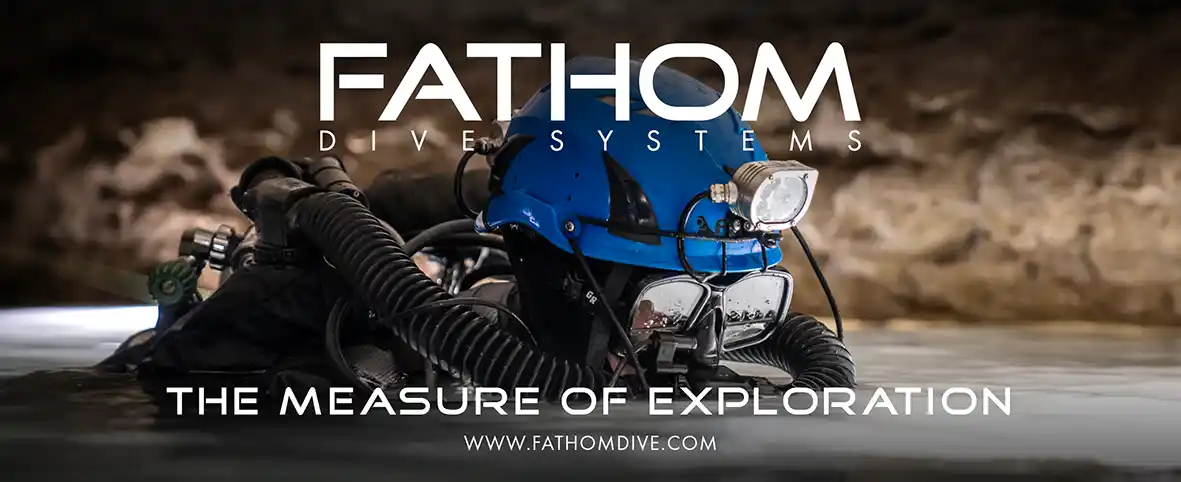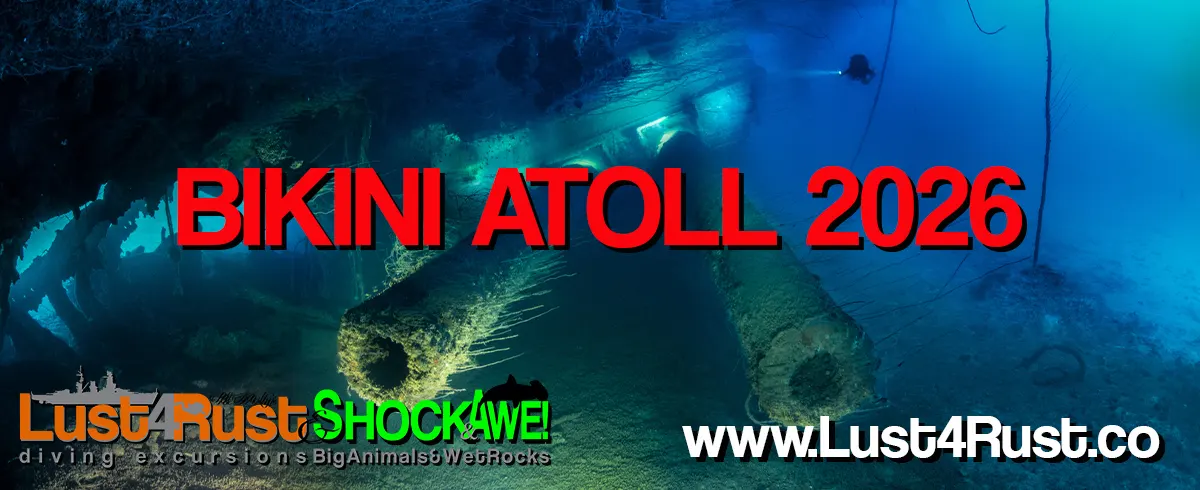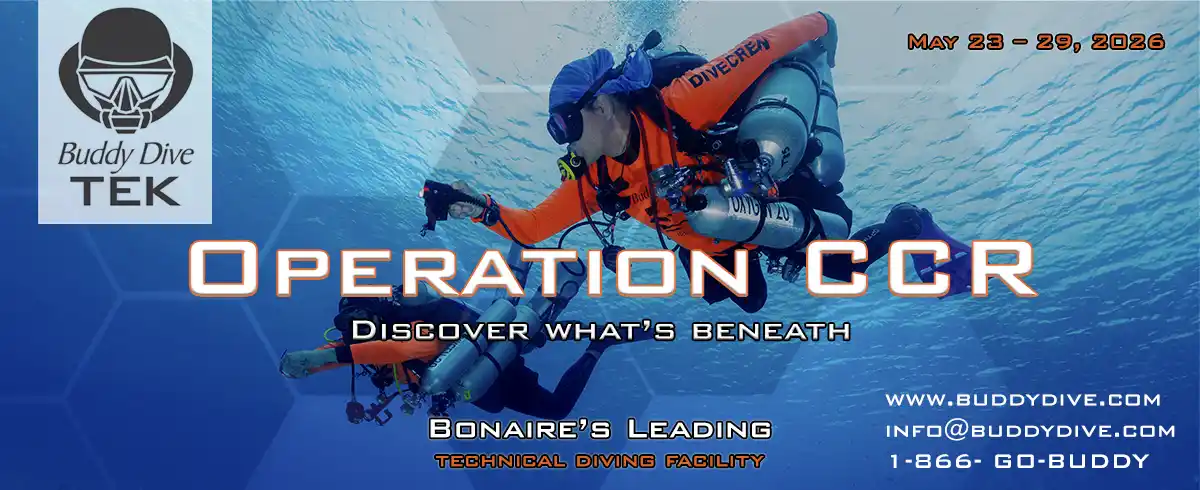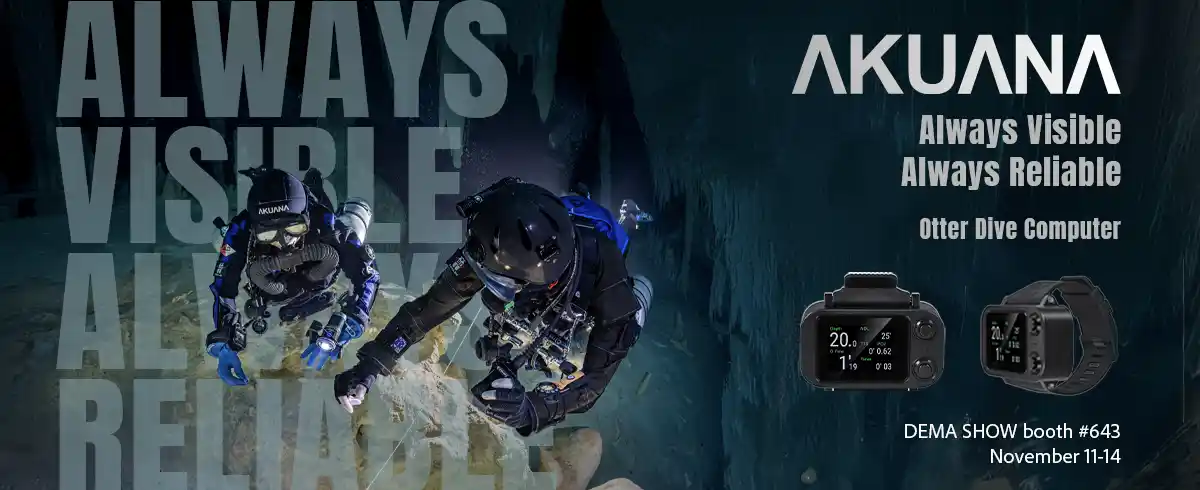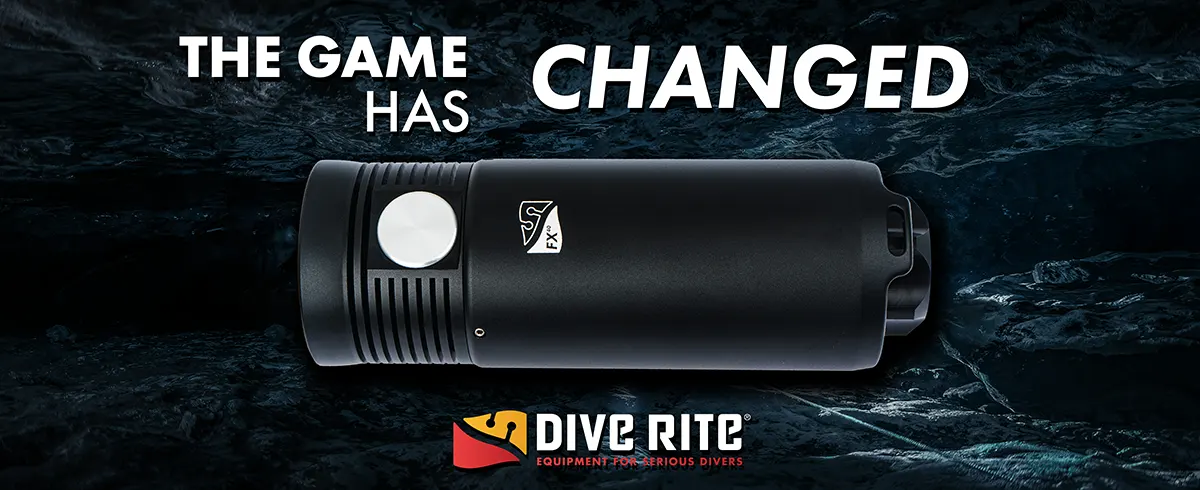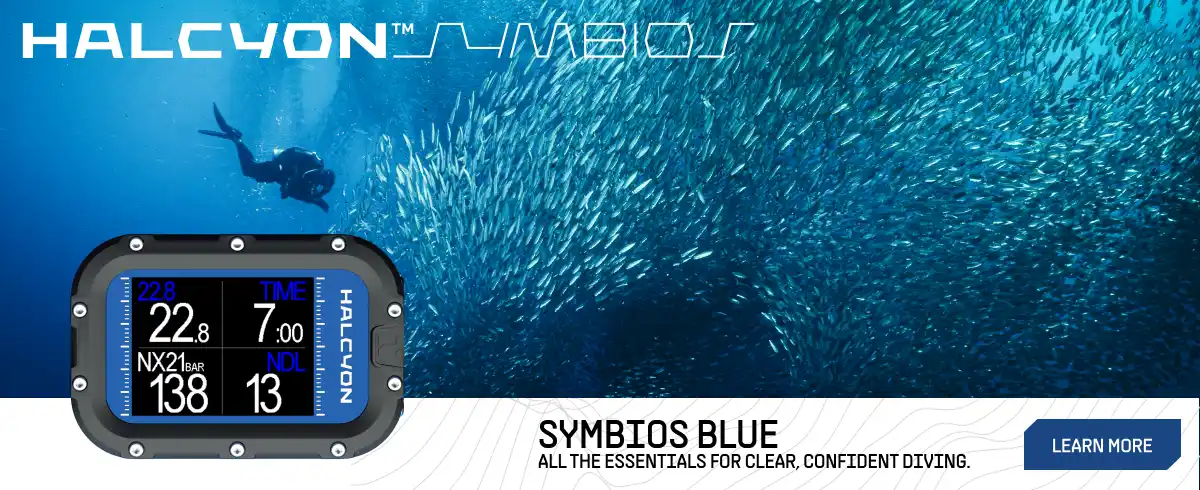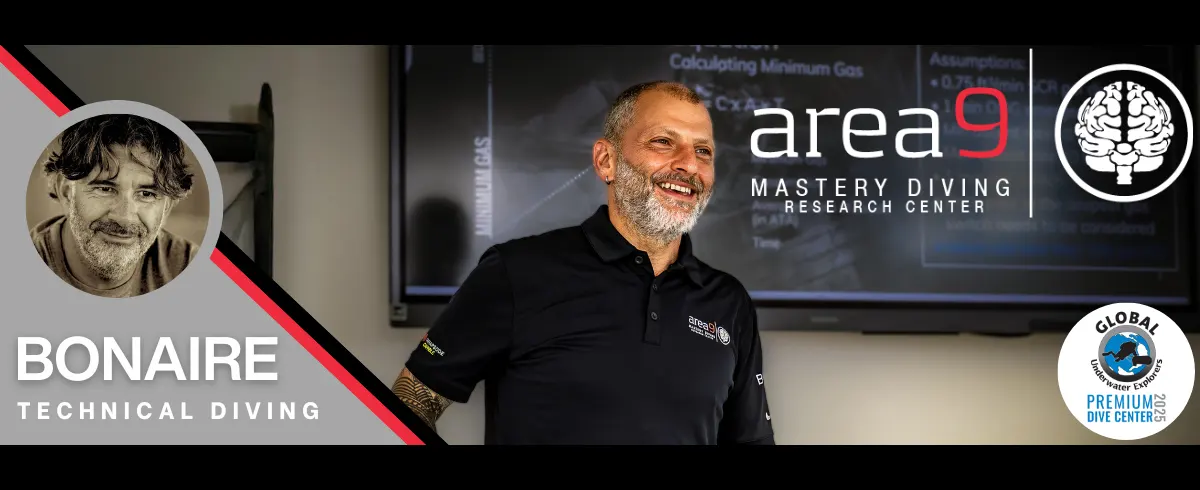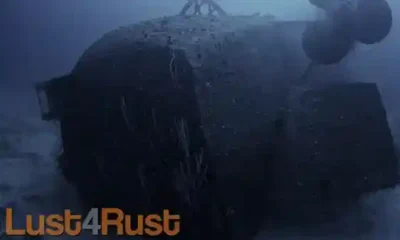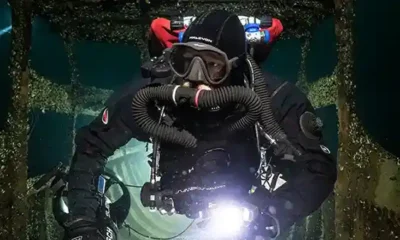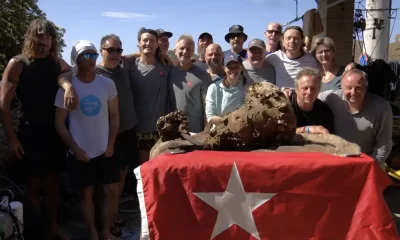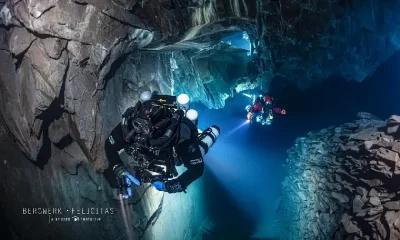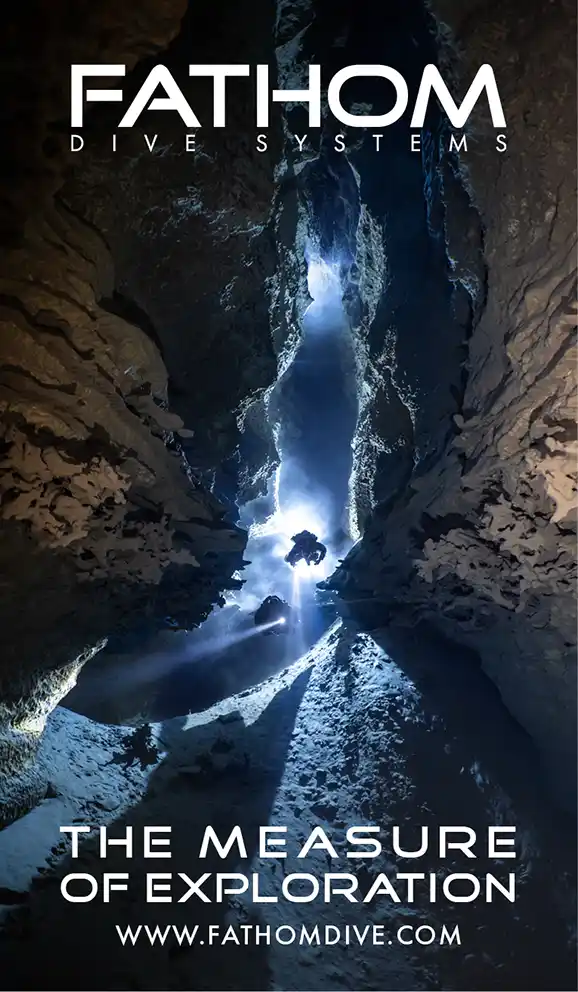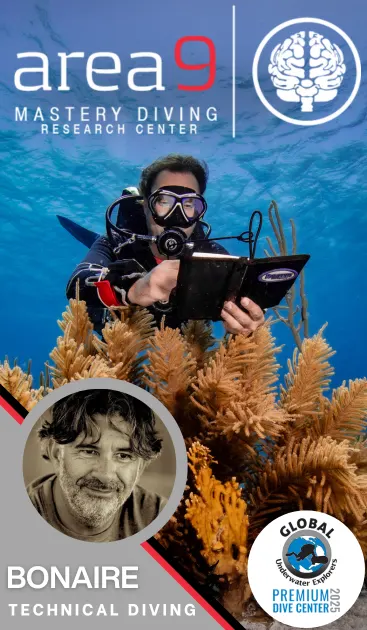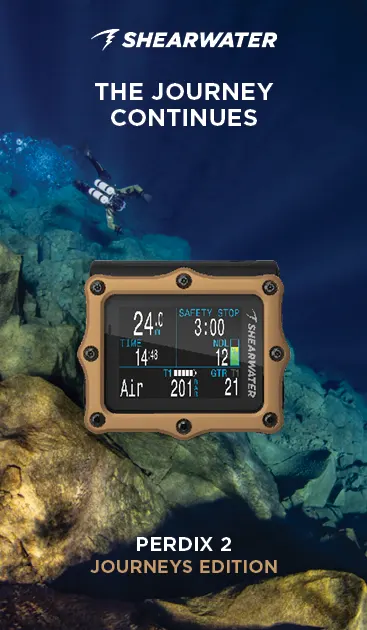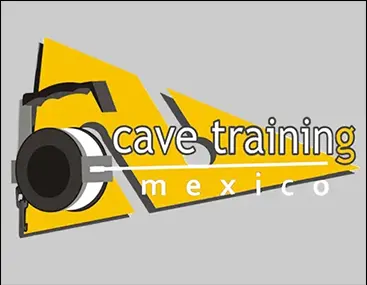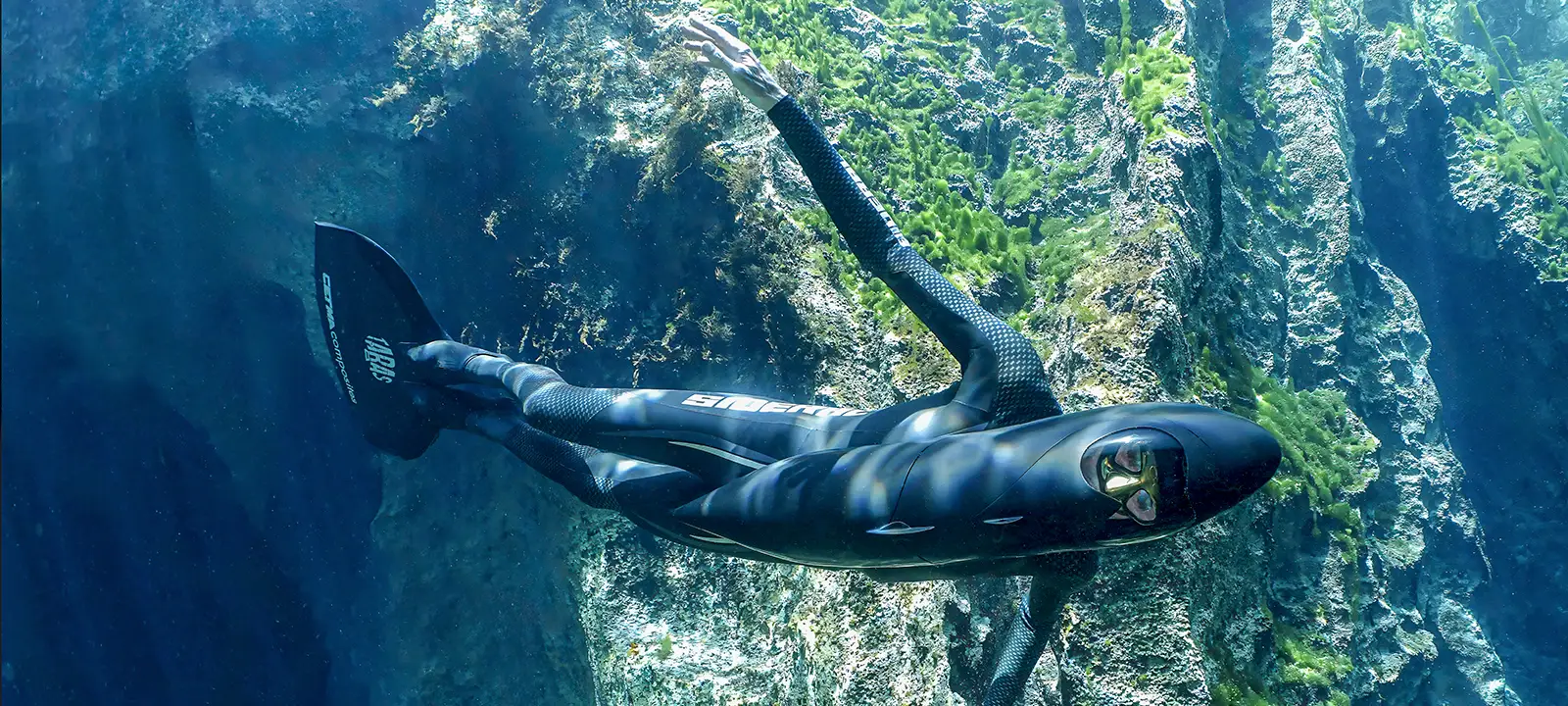
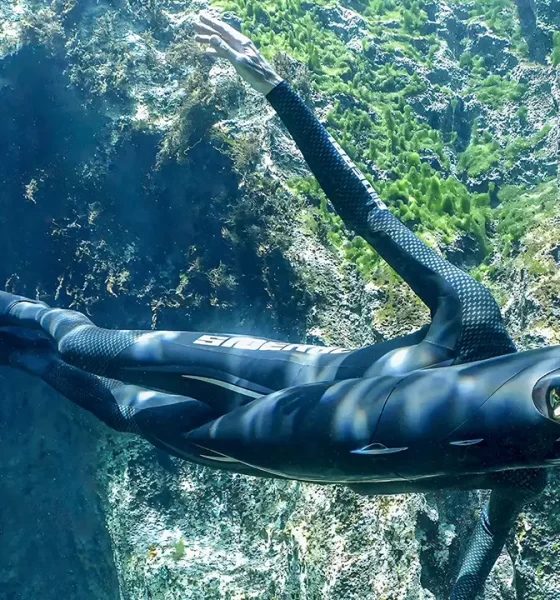
Latest Features
The Quest for Symbiosis: Meet Hydrophilis
Pioneering Swiss cave explorer and inventor Olivier Isler shares his latest creation—a unique, lightweight 10kg/22 lb closed circuit rebreather, dubbed Hydrophilis, which enables him to swim freely in the wild.
by Olivier Isler. Images courtesy of author. Lead image: The author flying through inner space with his Hydrophilis.
?Predive clicklist: Interstellar Main Theme – Hans Zimmer ?
Cliquez ici pour afficher l’article.
More than fifteen years ago, I had a beautiful dream in which I was swimming peacefully among whales and dolphins. When I woke up, I told myself that, with a mini diving apparatus, I could potentially make this dream come true. The idea of the Hydrophilis was born. I successfully tested the current prototype—the third version since the first concept in 2009—in May 2023, fourteen years later! This year, I tweaked the helmet’s buoyancy and the shape of the visor to enhance the field of vision.
Stages of Development
Specifications
The breathing apparatus has an operating time of up to 1.5 hours and is low volume with low-drag hydrodynamics.
Prototyping
The only option for prototyping was to build a mini closed-circuit rebreather (with 100% O2) with the possibility of using nitrox in a semi-closed circuit to dive down to 20 m/66 ft deep.
Initial research
Whether in the air or the water, the ideal shape for minimum resistance is the National Advisory Committee for Aeronautics (NACA) airfoil. I built the entire prototype using this approach. I met a professor of fluid dynamics at the Ecole Polytechnique in Lausanne, Switzerland, and he made a crucial point: to avoid turbulence in the flow, the angle of the trailing cone must be less than 18 degrees. I opted for 16 degrees (Fig. 1). Fortunately, I could obtain all of the required materials from a company specializing in composite materials. As a result, the Hydrophilis is built from epoxy resin and fiberglass.

At a woodturner, I was able to try out different NACA shapes (Fig. 2; the shape used to make the helmet). After many attempts and tests, I finally came up with a suitable shape which houses the chest-mounted rebreather (Fig. 3). I later expanded it to install the tank (pure oxygen or nitrox), leading to the final version.


The primary issue with the tank
How should I place a 1-liter tank in the best way to enhance hydrodynamics? I was stuck without a satisfying solution for two long years. Finally, by chance, I found the solution using a paintball bottle! Made in the Czech Republic, it’s a carbon-coated stainless-steel cylinder. Its operating pressure is 300 bar. It’s not diving-approved, but the specialist who designed it told me it was perfectly suitable for underwater use.
Issues with building the helmet
The only small mouthpiece I could get—a GODEL from the French army—was taking up too much space. I had to modify it. I had a technician build an adapter to bring it as close as possible to the face (Fig. 4) and thus reduce the helmet’s volume. However, I struggled to get the helmet perfectly in line with the chest-mounted rebreather.

Description of the Hydrophilis
Chest-mounted rebreather
Why chest-mounted? To avoid Immersion Pulmonary Edema (IPE), a dangerous affliction whose risk is higher when inhaling with a slightly lower pressure from a back-mounted counterlung.
Figure 5 shows the overall view of the chest-mounted part (the side in contact with the diver) with the protective fairing for the device’s components. At the bottom, there is a half hoop (here folded). When unfolded (Fig. 6), its end rests on the lower back, keeping the device as close to the body as possible. When you remove the fairing (Fig. 7), you can see part of the counterlung at the top. With a capacity of about 3 liters, the counterlung has a central partition separating exhaled gas from inhaled gas. Divers can fit the upper part of the counterlung around their necks using two articulated arms. Aside from that, the breathing bag fits closely to the rebreather’s fairing (made of epoxy resin). Under the right-hand cover, you’ll find an injector that activates when the breathing bag is empty enough. Divers can adjust the pressure relief valve on the left-hand side, in contact with the exhaled gas.



Under the bag, two corrugated pipes connect the counterlung to the canister containing 1,185 g of soda lime; they’re an integrated part of the fairing. You can see the 1.1-liter tank between these pipes. The first stage of the regulator (Scubapro)—equipped with a pressure transmitter—is concealed and connected to the injector of the counterlung by a low-pressure hose.
Helmet
The helmet forms a perfect extension to the rebreather part and is hydrodynamic. It is fitted onto the rebreather with a keyed connection and magnets (Fig. 8).
The thermoformed visor is made of Plexiglas (PMMA). Its bracket is articulated and attached to the helmet with magnets. Divers can open it to get access to the mouthpiece and the mask.

Exposure suit
The 2 mm freediving suit doesn’t have any apparent weights attached to it (they would increase resistance in the water). The diver wears below it a back-mounted harness (Fig. 9) and pants made in Cordura and ballasted with tungsten grit (2 mm, volumic mass 18 g/cm3).






Propulsion
Divers can use long freediving fins or a monofin.
While diving
I have completed 36 dives with this system to date. The speed reached using minimal effort is reasonably good, especially with a monofin. Something that could be improved is the leakage randomly caused by a deep exhalation; I’ve accomplished this by adjusting the pressure relief valve in the Nitrox version for dives deeper than 6 m/20 ft. The depth of the test was 16 m/52 ft. To be continued…
Autonomy: 60 to 90 minutes, depending on the exertion.
All I have to do now is keep diving with this lightweight device (10 kg/22 lb), which I’ve enjoyed quite a lot.
It’s impossible to say whether it will become a model for the future, but it’s a pleasing exercise for its own sake, and it’s satisfying to have created an original piece of equipment from scratch.

He swims with the fishes.
DIVE DEEPER
InDEPTH: Tech Diving in Pop Culture w/Olivier Isler
InDEPTH: The First Helium-based Mix Dives Conducted by Pre-Tech Explorers (1967-1988) by Chris Werner
InDEPTH: When Easy Doesn’t Do It: Dual Rebreathers in Extended-Range Cave Diving by Tim Blömeke
InDEPTH: Electrolung: The First Mixed Gas Rebreather Was Available to Sport Divers in 1968 by Walter Stark
InDEPTH: Diving Beyond 250 Meters: The Deepest Cave Dives Today Compared to the Nineties by Michael menduno and Nuno Gomes
InDEPTH: Tridente D’Oro: Underwater Tradition and Innovation by Andrea Murdock Alpini.

Born in 1950, Olivier Isler is a biology teacher. From age 20, he has been passionate about diving in extreme and challenging environments. He got into cave diving more for the technical challenge of the activity than for the flooded caves themselves. He explored several major cave systems in France, Italy, and the Canary Islands, where he reached the furthest point of the Atlantida Tunnel: the longest underwater lava tube in the world (about 1,500 m/4,921 ft).
Together with a French engineer, he built the RI 2000, the first entirely redundant rebreather. Using this system, he was the first CCR diver to go beyond 4,000 m/2.49 miles on a single dive in 1991. He stopped exploration in 1998 after a difficult sixteen-hour solo cave penetration over 4,300 m/2.67 miles.
Using his 25 years of experience, in 2002, he developed an innovative, low-volume, autonomous diving helmet, the XDH. In 2011, he received the Golden Trident from the International Academy of Underwater Sciences and Technique in Genoa, Italy, celebrating his 30 years of exploration and innovation.

